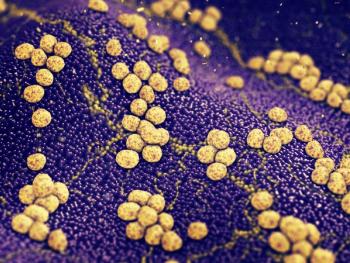
Diagnosis and management of cutaneous drug reactions in dogs and cats (Proceedings)
Observed reaction does not resemble pharmacologic action.
Pathogenesis
Immunologic
- Type I, II, III, IV hypersensitivity reactions
Nonimmunologic
- Related to pharmacology of the drug
- Predictable, dose dependent
Route of administration
- Oral, Topical, Injectable, Inhalation
Clinical presentations:
- Erythema multiforme, Toxic epidermal necrolysis
- Pemphigus foliaceus
- Vaccine reaction
- Cutaneous vasculitis
- Lichenoid Drug Eruption
Unique feline reactions:
- Miliary dermatitis reaction
- Vaccine reaction - Injection site fibrosarcomas
Erythema multiforme
- Drug-induced apoptosis - Programmed cell death
- Acute onset of lesions, Erythematous macules, “Target lesions”, Urticarial plaques, Vesicles and bullae, Concurrent systemic illness, Fever, depression, anorexia
- Mucous membrane involvement - Vesicles, bullae, ulcers
- Erythema multiforme major or Stevens-Johnson syndrome - Can be life threatening
Drugs implicated
- Aurothioglucose, Cephalexin, chloramphenicol, gentamicin, trimethoprim sulfas, ormetoprim sulfas, tetracycline, Diethylcarbamazine, levamisole, L- thyroxine, phenobarbitol
Toxic epidermal necrolysis
- Severe erythema multiforme?
- Massive and sudden apoptosis
- Diffuse erythematous rash, Vesicles and bullae, Full thickness skin sloughing and ulcers
- May affect footpads, mucous membranes
- Lesions usually painful, Concurrent fever, anorexia, lethargy, depression
- Secondary sepsis a problem, Often a fatal disease
Drugs implicated
- Penicillins, cephalosporins, trimethoprim sulfas, Griseofulvin, Levamisole, 5- fluorocytosine, Topical flea dips (D-limonene)
Drug-induced pemphigus
- Mimics Pemphigus foliaceus
- Acute, transient pustular eruptions, Subsequent crusts, scales, erosions, epidermal collarettes, Variable distribution patterns
- Systemic illness rare
Drugs implicated
- Ampicillin, cephalosporins, sulfonamides, Diethylcarbamazine, thiabendazole, Cimetidine, procainamide
Vaccine reactions
- Most commonly observed at site of a subQ or IM vaccination - Rabies, DHLP- Parvo
- Can occur from weeks to months post-vaccination
- Focal area of alopecia and hyperpigmentation
Breed predisposition
- Poodle, Bichon Frise, Shih Tzu, Lhasa Apso, Miniature Schnauzer, Yorkshire Terrier, Bedlington Terrier, Silky Terrier
- Most spontaneously resolve over several months, Lesion may remain static
- Area of alopecia and hyperpigmentation can gradually enlarge over months to years
Treatment
- Tincture of time, Surgical excision, Pentoxifylline (Trental) - 15 mg/kg TID x 3 months
Cutaneous vasculitis
- Palpable purpura, hemorrhagic bullae, Craterform ulcers, full thickness skin sloughing
- Acrocyanosis of distal extremities, Large areas of erythematous or purplish skin (Does not blanch on dioscopy)
- Lesion often painful, Pitting edema of distal extremities
- Concurrent systemic illness - Anorexia, depression, fever
Drugs implicated
- Penicillins, sulfonamides, cephalosporins, dexamethasone, DHLP- Parvo vaccine
Lichenoid drug eruption
- Solitary to multiple papillomatous or plaque-like lesions
- Drugs implicated: Cyclosporine (Atopica, Neoral, Gengraf)
Miliary dermatitis reaction
- Miliary lesions - Affects head, face, neck regions
- Intense pruritus, Mimics “food allergy”
- Drugs implicated: Methimazole (Tapazol), Propranolol
Vaccine reaction
Injection site fibrosarcomas
- Interscapular and femoral regions - Associated with either subQ or IM injections
- Tumor may develop 1-2 years post -vaccination
- Vaccines implicated: FeLV, Rabies, FVRCP
Diagnosis of cutaneous drug reactions
History
- Observed reaction does not resemble pharmacologic action
- Prior exposure to drug may have been well tolerated
- Reaction can be reproduced by small amounts of drug
- Reaction consistent with a known hypersensitivity response
- Reaction occurs within several days of drug exposure
- Resolution within several days of drug withdrawal
Drug rechallenge
- Proves cause and effect relationship, Clinical signs often more severe, Outcome can be fatal
Erythema Multiforme
- Histopathology- Hydropic interface dermatitis, Dyskeratotic keratinocytes with satellitosis, Superficial perivascular infiltrates with mononuclear cells
Toxic Epidermal Necrolysis
- Histopathology - Hydropic degeneration of basal cells, Coagulation necrosis of epidermis, Absence of dermal inflammation, Dermoepidermal separation and bullae formation
Pemphigus Foliaceus
- Histopathology - Subcorneal pustules, Acantholytic cells, Neutrophils, eosinophils, Involvement of hair follicles
Vaccine Reaction
- Histopathology - Vasculitis, panniculitis, Dermal edema, Atrophic hair follicles, Hydropic degeneration of basal cells
Cutaneous Vasculitis
- Histopathology - Most commonly leukocytoclastic, Neutrophils in vessel walls, “Nuclear dust”, Fibrinoid degeneration, thrombi, Perivascular hemorrhage and edema
Lichenoid drug eruption
- Histopathology - Psoriasiform lichenoid dermatosis – with or without papillomavirus
Unique feline reactions
Miliary dermatitis
- Histopathology - Epidermal crusts, spongiosis, Neutrophilic, eosinophilic vesicopustules, Eosinophilic perivascular infiltrates
Vaccine Reactions
- Histopathology - Fibrosarcoma
Treatment
- Discontinue suspected drug
- Avoid chemically related or similar drugs
- When multiple drugs are present: all should be discontinued
- Best advice: “Do no harm!”
- For Idiopathic cases (Erythema multiforme, cutaneous vasculitis, miliary dermatitis) – consider hydrolysate treated or home-cooked elimination diet trial
Supportive Therapy - IV Fluids
- Systemic antibiotics in septic patients
- Broad spectrum initially - Cephalexin - 10 mg/lb TID or Based on culture and sensitivity
- Gram negative organisms - Ciprofloxacin - 22 mg/kg SID
Immunosuppressive drugs
- Extremely controversial - May actually be contraindicated, Increased risk of infections, delayed healing
- Indicated in drug induced Erythema Multiforme major
- Corticosteroids: Prednisolone - 1 mg/lb SID-BID
- Immune Modulating Drugs: Cyclophosphamide - 1 mg/lb SID, Cyclosporine (Neoral, Gengraf, Atopica) - 5 mg/kg SID-BID, Azathioprine (Imuran) - 1 mg/lb SID, Pentoxifylline (Trental) – 15 mg/kg TID
Clinical criteria EMM EMM SJS OVE TEN
Flat or raised, focal
or multifocal, target lesions Yes Yes No No No Number of mucosa involved <1 >1 >1 >1 >1
Erythematous or purpuric,
macular or patchy eruption <50% <50% >50% >50% >50% Epidermal detachment <10% <10% <10% 10-30 >30%
Olivry T et al: Erythema multiforme, Stevens-Johnson syndrome, and toxic epidermal necrolysis in the dog: Clinical classification, drug exposure, and histopathological correlations. Proceedings of the Autumn Meeting of the British Veterinary Dermatology Study Group, 1998, York, United Kingdom.
Newsletter
From exam room tips to practice management insights, get trusted veterinary news delivered straight to your inbox—subscribe to dvm360.





